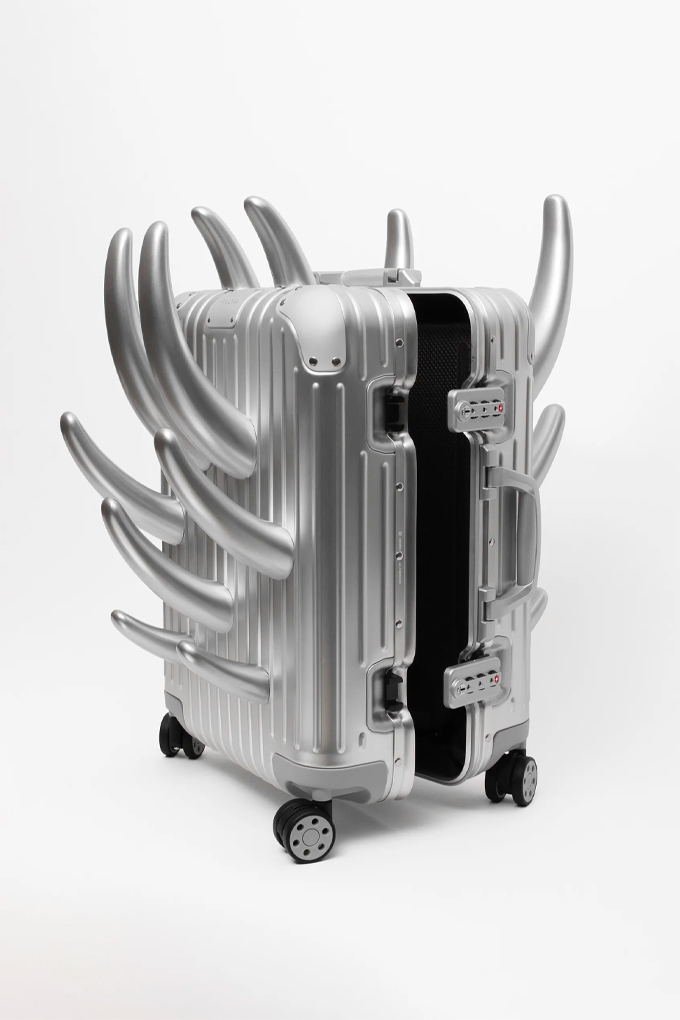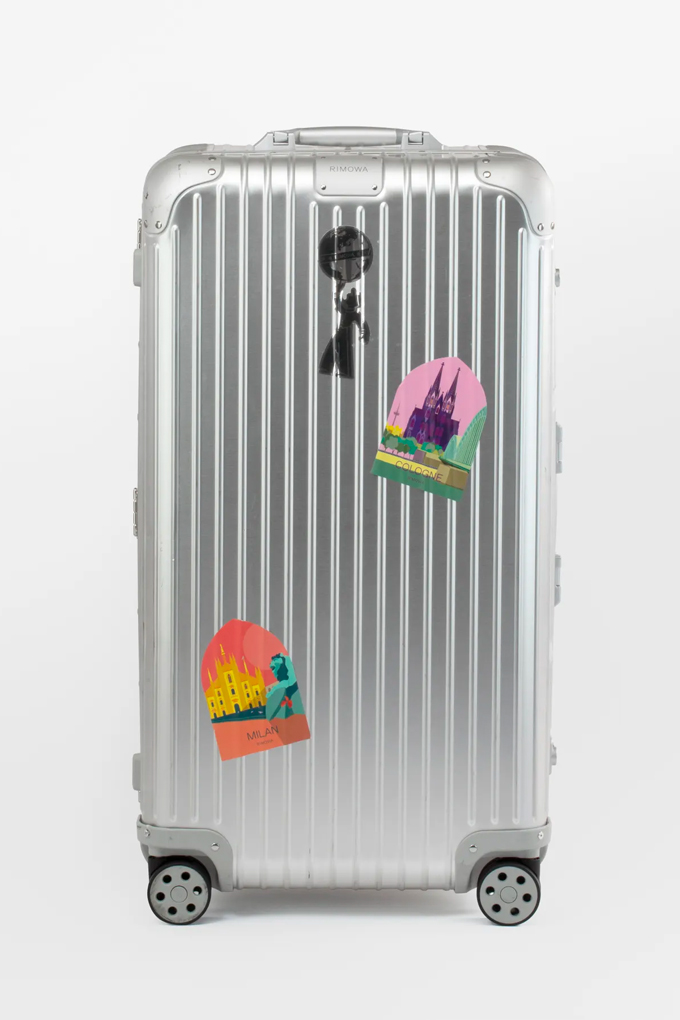To celebrate its 125th birthday, Germany-based luggage brand Rimowa is launching a traveling exhibition that’s as much a timeline of its history as it is an object study in peripatetic curios. Called SEIT 1898 (“seit” is the German word for “since”), the expo opens in Tokyo’s Harajuku neighbourhood on 8 June, rolls to New York City in September, and concludes in Cologne in early 2024.
The exhibition features a modular series of dioramas spotlighting everything from the company’s highly recognisable grooved aluminium cases—which were first introduced in 1950, paying homage to the cladding on a 1919-invented Junkers aircraft—to “special purpose” one-offs, like violin or wine carriers, to a wunderkammer of artist editions and collaborations (Supreme, Off-White, Palace Skateboards, Porsche and Dior to name a few, many of which have happened since LVMH acquired Rimowa in 2016).

“It’s an example of the power of consistency over time,” says Emelie de Vitis, Senior Vice President of product and marketing at Rimowa, speaking to the layered and eclectic universe the company has built and its steadfast look throughout the eras. She adds: “From the beginning, it was upheld that Rimowa would be meticulous in its craftsmanship, and that it would simultaneously be an innovative brand that adapts to changes in travel habits no matter how expansive. That’s unique.”
SEIT 1898 highlights century-old designs (that were originally conceived by the company’s founder, Paul Morszeck, for nascent car travel) next to recent, hyper-modern concepts, such as an aluminium case reimagined by the artist Fabian Bergmark Näsman with a thicket of polished, protruding horns.
The Bergmark Näsman piece is part of Rimowa’s ‘As Seen By’ series, in which creatives are approached to interpret Rimowa items or raw materials as they wish, and which has its own dedicated section in the show. While the pieces from ‘As Seen By’ are editorialised and not exactly practical for travel habits, they make for engaging viewing all the same—a microcosmic offshoot of the borderline eccentric yet decidedly highbrow ecosystem that Rimowa has long nurtured. See also a miniature cabin designed by the Parisian firm Avoir, and a striking aluminium armoire by the Korean artist Hyunhee Kim, among others.

Certain material examinations are more reflective of the way we move about today. One diorama is dedicated to polycarbonate, the lightweight, tough and more affordable composite that Rimowa now uses across its product array (with the aluminium pieces clocking in at a higher price point). The company believes polycarbonate is a well-suited material for our evermore interconnected world. De Vitis adds that, where alloy and plastics are concerned, SEIT 1898 serves as a deep wellspring for innovations and activations that lay ahead: “We’re making considerable efforts towards sustainability at Rimowa,” she says. “Among them is our pre-loved luggage program called ‘Re-Crafted’, a circular model that focuses on reusing, repairing, and recycling suitcases.”
Speaking of pre-loved luggage, SEIT 1898 also boasts a segment of personal cases, on loan from “friends” of the brand. These examples haven’t been buffed out or glossed over for their display. Nicks, scratches, scuffs, dents, and dings—the physical rights of passage for Rimowa enthusiasts’ pieces as they globetrot—are all included.

Roger Federer’s case, a tall and racket-accommodating aluminum piece, is one of a number of Rimowa designs owned by the tennis star. He recently overpacked for a trip on the famed Orient Express train from Paris to Venice with his parents and close friends. “I admit that I brought too many cases with me as usual, but they were able to fit somewhere on the train,” he says.
The celebrity tattoo artist Dr. Woo’s silver and leather case is coated with abrasions and spindle-legged spiders. “I spent a month in Italy once, and I wanted to see if I could do the whole trip without checking luggage. So I just had this carry-on with me,” he says. “The puzzle of packing it and choosing only the most needed things was a great lesson and practice in shedding unnecessary weight. A very freeing feeling.”
Other loaners come courtesy of Billie Eilish (a see-through Off-White collaboration), Bella Hadid (another Off-White collaboration example, customised with her name), Patti Smith (a handheld case smattered with worn studio stickers), Adwoa Aboah (a well-worn red case), and many others.

Aboah speaks to the certain magic that underscores a well-earned Rimowa patina. “People are so precious with their bags. Mine is incredibly bashed in! So it always makes me smile when this fancy suitcase is hauled into a wheelbarrow and pulled on a sandy, bumpy road against a backdrop of the most beautiful, untouched places on the planet.” Rimowa, as SEIT 1898 demonstrates, is up for the ride.
This article was originally published on Vogue.com.





